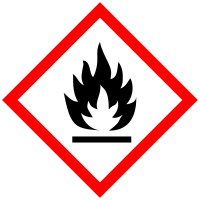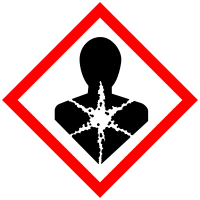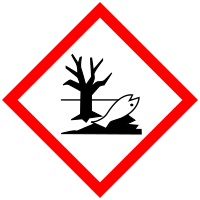
Improving Member States preparedness to face an HNS pollution of the Marine System (HNS-MS)
Naphthalene
Description Top
| CAS number | 91-20-3 |
| UN number | 1334 |
| Chemical formula | C10H8 |
| Standard European Behaviour Classification (SEBC) | Sinker (S) |
GESAMP Hazard profile
| A1 | A2 | B1 | B2 | C1 | C2 | C3 | D1 | D2 | D3 | E1 | E2 | E3 |
| 3 | NR | 4 | 1 | 1 | 0 | 1 | 0 | 0 | T | T | S | 2 |
Marine pollution Classification (MARPOL Annex II)
| Category | Description |
| Other Substances | Substances which have been evaluated and found to fall outside Category X, Y or Z because they are considered to present no harm to marine resources, human health, amenities or other legitimate uses of the sea when discharged into the sea from tank cleaning of deballasting operations. The discharge of bilge or ballast water or other residues or mixtures containing these substances are not subject to any requirements of MARPOL Annex II. |
Alternate names for this chemical
Naphthalin
Naphthene
Tar Camphor
White Tar
Naphthalene
Naphtalene
Naphthene
Tar Camphor
White Tar
Naphthalene
Naphtalene
Physico-chemical properties Top
| Chemical formula | C10H8 | ||
| Molar mass | 128.17 [g/mol] | ||
| Critical molar volume | 0.000407 [m³/mol] | ||
| State | Solid at 25°C and 1 atm | ||
| Fusion temperature | 80.2 [°C] | ||
| Boiling temperature | 218 [°C] | ||
| Critical temperature | 748.5 [°C] | ||
| Density |
|
||
| Surface tension |
|
||
| Kinematic viscosity |
|
||
| Hydrosolubility |
|
||
| Vapour pressure |
|
||
| Critical pressure | 4050000 [Pa] | ||
| Vapour density | 3.3 | ||
| Flash point (Pensky-Martens closed cup) | 88 [°C] | ||
| Flash point (Cleveland open cup) | 79 [°C] | ||
| Lower explosivity limit (LEL) | 0.9 [%] | ||
| Upper explosivity limit (UEL) | 5.9 [%] | ||
| Vaporization enthalpy |
|
||
| Combustion enthalpy | 38900000 [J/Kg] | ||
| Specific heat capacity | 1292.8 [J/(Kg·K)] | ||
| Combustion efficiency | 70 [%] | ||
| Mass flow rate of the combustion surface | 0.06 [Kg/(m²·s)] | ||
| Radiative fraction | 30 [%] | ||
| Henry's constant | 37.85 [mol/(m³·Pa)] |
Behaviour Top
| Log Kow | 3.7 |
| Log Koc | 3.13 |
| Hydrolysis (Half-life) | Not hydrolysable |
| Aqueous photolysis (Half-life) | Not photolysable |
| Biodegradation in estuary environment (Half-life) | Not biodegradable |
| Biodegradation in marine environment (Half-life) | Not biodegradable |
| Standard European Behaviour Classification (SEBC) | Sinker (S) |
| Bioconcentration factor (BCF) | 427 |
Ecotoxicity Top
| Lowest median lethal concentration (LC50) on algae | 2.96 [mg/l] | ||
| Lowest median lethal concentration (LC50) on crustacean | 0.8 [mg/l] | ||
| Lowest median lethal concentration (LC50) on fishes | 1.6 [mg/l] | ||
| Highest no observed effect concentration (NOEC) on algae | > 4.3 [mg/l] | ||
| Highest no observed effect concentration (NOEC) on crustacean | 0.5 [mg/l] | ||
| Highest no observed effect concentration (NOEC) on fishes | 0.12 [mg/l] | ||
| Assessment factor (AF) |
|
||
| Predicted No Effect Concentration (PNEC) |
|
Hazards Top




Warning
| IDLH | 250 [ppm] |
Hazards statements
Physical
H228
Flammable solid.
Health
H302
Harmful if swallowed.
H351
Suspected of causing cancer.
Environmental
H410
Very toxic to aquatic life with long lasting effects.
Precautionary statements
Prevention
P202
Do not handle until all safety precautions have been read and understood.
P234
Keep only in original container.
P270
Do no eat, drink or smoke when using this product.
P273
Avoid release to the environment.
P281
Use personal protective equipment as required.
Response
P301 + P330 + P331
IF SWALLOWED: rinse mouth. Do NOT induce vomiting.
P303 + P361 + P353
IF ON SKIN (or hair): Remove/Take off immediately all contaminated clothing. Rinse skin with water/shower.
P305 + P351 + P338
IF IN EYES: Rinse cautiously with water for several minutes. Remove contact lenses, if present and easy to do. Continue rinsing.
P308 + P313
IF exposed or concerned: Get medical advice/attention.
P370 + P378
In case of fire: Use ... for extinction.
Disposal
P501
Dispose of contents/container to ...
GESAMP Top
GESAMP Hazard profile
| A1 | A2 | B1 | B2 | C1 | C2 | C3 | D1 | D2 | D3 | E1 | E2 | E3 |
| 3 | NR | 4 | 1 | 1 | 0 | 1 | 0 | 0 | T | T | S | 2 |
A1: Bioaccumulation
| Rating | Description |
| 3 | Moderate potential to bioaccumulate |
A1a:
| Rating | Description | Criteria [mg/l] |
| 3 | Moderate potential to bioaccumulate | 3 ≤ Log Kow < 4 |
A1b:
| Rating | Description | Criteria |
| 3 | Moderate potential to bioaccumulate | 100 ≤ BCF < 500 |
A2: Biodegradation
| Rating | Description |
| NR | Not readily biodegradable |
B1: Acute aquatic toxicity
| Rating | Description | Criteria [mg/l] |
| 4 | Highly toxic | 0.1 < LC/EC/IC50 ≤ 1 |
B2: Chronic aquatic toxicity
| Rating | Description | Criteria [mg/l] |
| 1 | Low | 0.1 < NOEC ≤ 1 |
C1: Acute oral toxicity
| Rating | Description | Criteria [mg/Kg] |
| 1 | Slight | 300 < AOTE ≤ 2000 |
C2: Acute dermal toxicity (skin contact)
| Rating | Description | Criteria [mg/Kg] |
| 0 | Negligible | ADTE > 2000 |
C3: Acute inhalation toxicity
| Rating | Description | Criteria [mg/l] (4 hours exposure) |
| 1 | Slight | 10 < AITE ≤ 20 |
D1: Skin irritation or corrosion
| Rating | Description | Sign |
| 0 | Not irritating | No clinical signs and/ |
D2: Eye irritation
| Rating | Description | Sign |
| 0 | Not irritating | No clinical signs and/ |
D3: Long-term health effects
| Notation | Hazard endpoint | Description | GHS category |
| T | Specific Target, Organ Toxicity following single or repeated exposure | Significant changes which affect the morphology or biochemistry of tissues or organs; organ dysfunction up to death | Categories 1 and 2 for Specific Target Organ Toxicity Single (STOT-SE) or Repeated Exposure (STOT-RE) |
E1: Tainting of seafood
| Rating | Description |
| T | Substances are considered to cause tainting if a statistically significant off-flavour or smell can be detected following exposure of the fish for 24h to 1mg/l or less. |
E2: Behaviour of chemicals in the marine environment
| Rating | Description |
| S | Sinker |
E3: Interference with the use of coastal amenities
| Rating | Interference | Description | Interpretation | Warning |
| 2 | Moderately objectionable | 1 is a persistent floater; and/or 2 is moderately acutely toxic; and/or 3 is irritating to skin and/or eyes; and/or 4 has long-term health effects other than carcinogenicity, mutagenicity or reprotoxicity; and/or 5 is highly flammable; and/or 6 is moderately flammable and is a floater with evaporative properties | 1 E2 = Fp; and/or 2 C1 and/or C2 and/or C3 = 23; and/or 3 D1 and/or D2 = 2; and/or 4 D3 contains Ss, Sr, T, A, N, or I; and/or 5 Flashpoint <23°C; and/or 6 Flashpoint 23°C to 60°C and E2 = FE or FED | Warning issued and possible closure of amenities |
GHS Security Information




Warning
About the project
HNS-MS is a decision-support tool that Belgian and French maritime authorities as well as coastguard stations can activate in order to forecast the drift, fate and behavior of acute marine pollution by Harmful Noxious Substances (HNS) accidentally released in the marine system.
Contact us
Copyright © 2015–2024 HNS-MS Consortium
 HNS-MS has been funded by DG-ECHO under agreement ECHO/SUB/2014/693705 and runs from 1 January 2015 to 31 March 2017.
HNS-MS has been funded by DG-ECHO under agreement ECHO/SUB/2014/693705 and runs from 1 January 2015 to 31 March 2017.